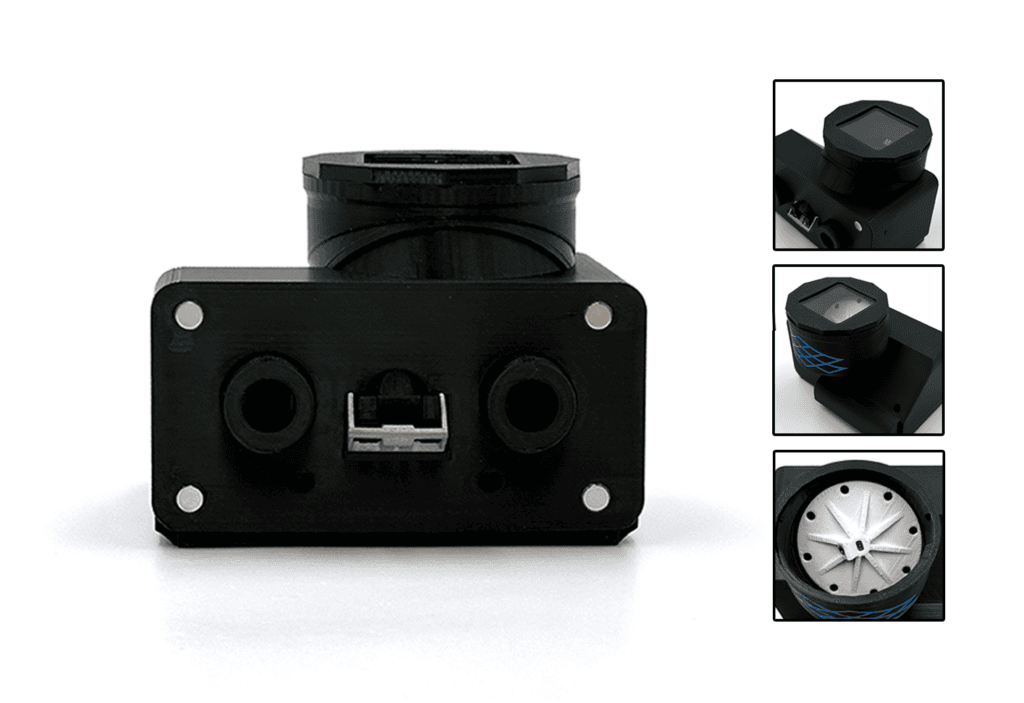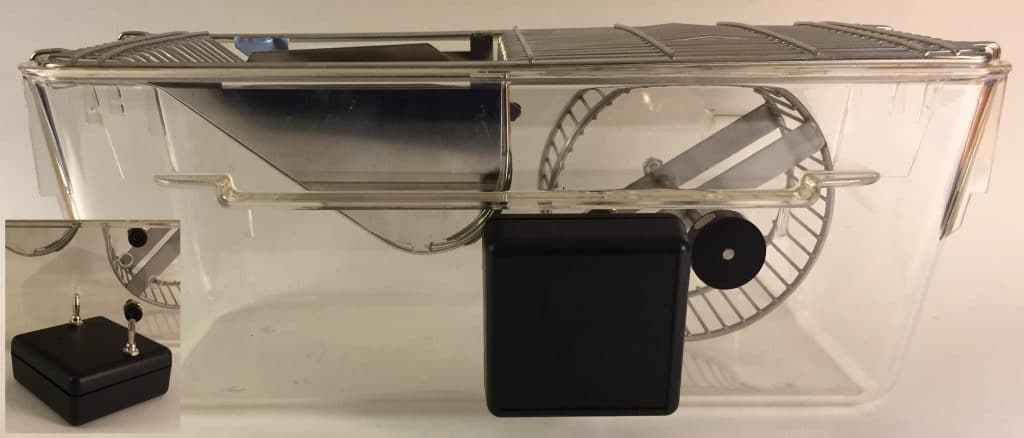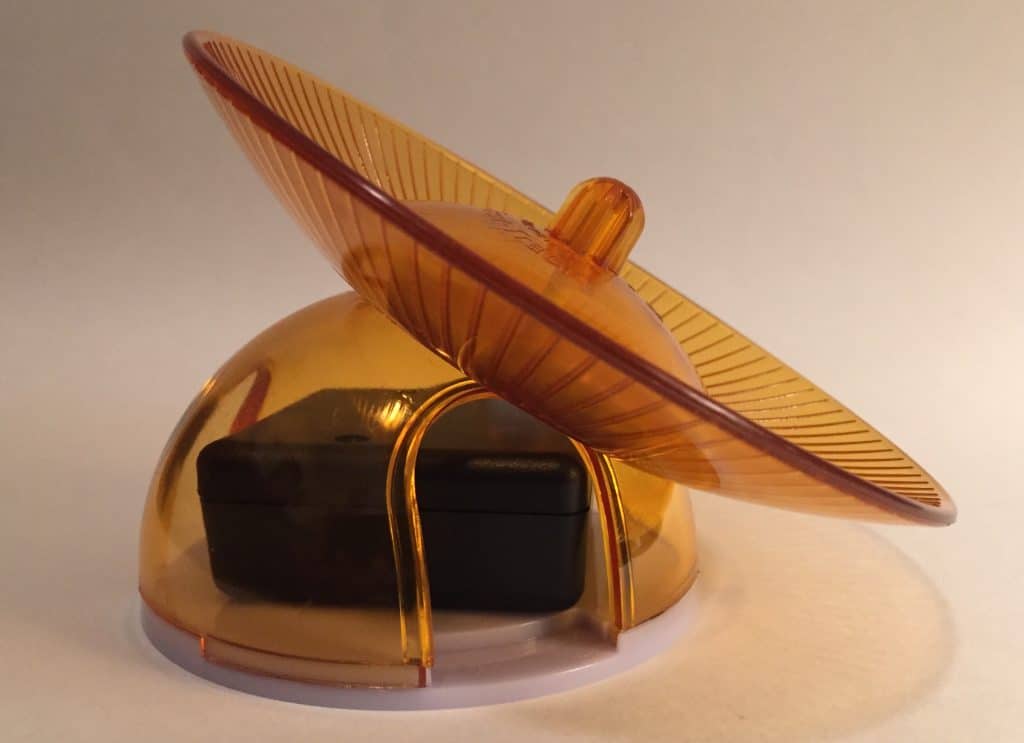ClockLab Wireless
ClockLab can now record activity wirelessly. Up to 250 wireless nodes (images below) send data by radio to a single receiver, which connects via USB to the computer and the ClockLab Wireless data collection program. Multiple receivers operating in the same area, on the same or different computers, allow for unlimited expansion. Each node sends:

Wireless node with PIR (motion) sensor.
- Activity, recorded from a PIR (motion) sensor, or rotations of a vertical or horizontal running wheel
- Ambient Temperature
- Light level
- Battery level and low-battery warning
- Radio signal status and strength
Battery life: 3 years. Batteries (2 AA) are user replaceable.
Reporting interval: 1 minute (default). Can be reduced to as low as 2 seconds. Short reporting intervals slightly reduce battery life and the total number of nodes that can be used at once.
Range: 25 meters (nominal). In open air, the nodes can transmit 250 meters reliably. Exact range depends on lab environment (wire racks and shelves, walls, cage lids etc.).
Wireless Nodes:
mealPOD: A robust pellet dispenser. When combined with Actimetrics’ innovative wireless protocol, it becomes an unlimited, cable free data collection hub residing within existing rodent home caging.
PIR: The infrared motion sensor can be seen in the image above as the white rounded cylinder protruding from the underside of the node. These are highly sensitive, have a wide angle of view, and greater than 1-second temporal resolution.
Vertical running wheel: The node senses wheel revolutions from the rotation of the magnet mounted on the wheel axle (black disk). The node attaches to the side of the cage with banana plugs and jacks, similar to the traditional mechanical switches, to allow instant mounting and removal of the nodes for cage cleaning. How to adapt existing running wheel cages for wireless nodes.
Horizontal running wheel: The nodes senses wheel revolutions from the rotation of a magnet attached to the underside of the wheel.



